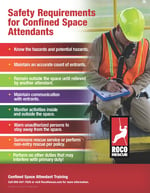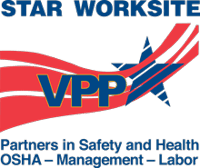 We are proud to announce that once again Roco has been reapproved as an OSHA VPP Star Worksite organization. VPP Star is the highest level of recognition awarded by OSHA. VPP participants serve as models for other employers, workers, and unions by operating excellent safety and health management programs. Roco has been a VPP Star worksite since 2013 and is excited to continue this tradition of raising the bar on its journey of maintaining an excellent safety and health program.
We are proud to announce that once again Roco has been reapproved as an OSHA VPP Star Worksite organization. VPP Star is the highest level of recognition awarded by OSHA. VPP participants serve as models for other employers, workers, and unions by operating excellent safety and health management programs. Roco has been a VPP Star worksite since 2013 and is excited to continue this tradition of raising the bar on its journey of maintaining an excellent safety and health program.
To earn this distinction, we implemented a comprehensive safety program and underwent a rigorous onsite evaluation by a team of OSHA safety and health experts. The “Star” designation is reserved for companies that “demonstrate exemplary achievement in the prevention and control of occupational safety and health hazards, as well as the development, implementation and continuous improvement of safety and health management systems.”
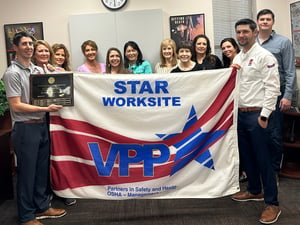 To our knowledge, we are the only rescue training, services and equipment company to achieve the VPP Star designation. The process of earning and renewing our VPP Star is an important way for us to get external feedback and confirm that we are “walking the walk” as an organization.
To our knowledge, we are the only rescue training, services and equipment company to achieve the VPP Star designation. The process of earning and renewing our VPP Star is an important way for us to get external feedback and confirm that we are “walking the walk” as an organization.
Roco’s Total Recordable Incident Rate (TRIR) and Days Away Restricted or Transferred (DART) were 100% below the national average for our industry. Having maintained our status as a VPP Star Worksite for another year has once again validated that we are living up to the highest standards of OSHA’s Voluntary Protection Program. This achievement would not be possible without a dedicated commitment to safety by all Roco employees.
Additional Resources

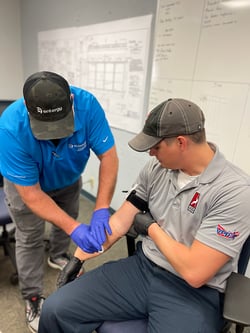 So, you’ve got your rescue team up to date on all the nifty tricks in confined space rescue. Litters, knots, anchoring, mechanical advantage systems, the whole kit, and kaboodle. Now, you’ll need some first aid and CPR training to meet OSHA’s standards. Some folks say a simple layperson first aid course will do it. Others argue that teams need a week-long EMS professional course to prepare. Going further, some folks say that investing in drills and skills retention is the most critical issue. To cut through some confusion, let’s look at some of the things employers might factor in when choosing medical training for Emergency Response and Rescue Teams.
So, you’ve got your rescue team up to date on all the nifty tricks in confined space rescue. Litters, knots, anchoring, mechanical advantage systems, the whole kit, and kaboodle. Now, you’ll need some first aid and CPR training to meet OSHA’s standards. Some folks say a simple layperson first aid course will do it. Others argue that teams need a week-long EMS professional course to prepare. Going further, some folks say that investing in drills and skills retention is the most critical issue. To cut through some confusion, let’s look at some of the things employers might factor in when choosing medical training for Emergency Response and Rescue Teams.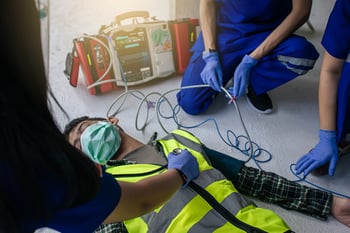 Now, let’s take a look at CPR or Cardiopulmonary Resuscitation. Simply put, rescuers will perform chest compressions to pump blood around the body and typically breathe for the patient. But wait, don’t I need to shock the patient? What about the AED (Automated External Defibrillator)? Am I required to have an AED in my first aid supplies? A
Now, let’s take a look at CPR or Cardiopulmonary Resuscitation. Simply put, rescuers will perform chest compressions to pump blood around the body and typically breathe for the patient. But wait, don’t I need to shock the patient? What about the AED (Automated External Defibrillator)? Am I required to have an AED in my first aid supplies? A 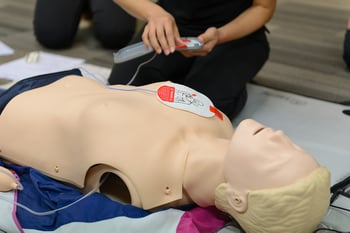
 If you don’t use it, you lose it. Regardless of the course, the most critical component of any program is drilling and skills retention. In a
If you don’t use it, you lose it. Regardless of the course, the most critical component of any program is drilling and skills retention. In a 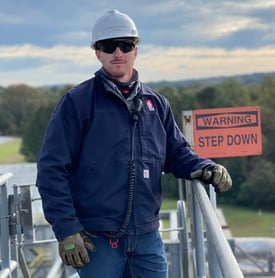


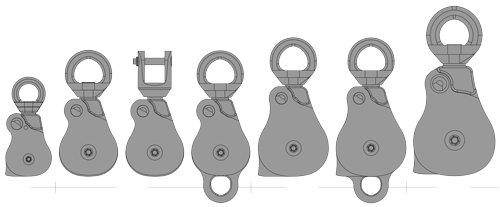 Inspect all CMC ProSwivel or Rock Exotica Omni-Block swivel pulleys immediately.
Inspect all CMC ProSwivel or Rock Exotica Omni-Block swivel pulleys immediately.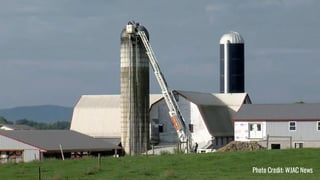 In Centre County, PA, three family members died in a grain silo incident. A father, age 47, and his sons ages 14 and 19 all died after becoming trapped inside a silo. The family members reportedly died from asphyxiation due to gasses in the silo. Neighbors said it was a ripple effect with one going in to help the next when they all eventually succumbed to the hazardous atmosphere inside the space.
In Centre County, PA, three family members died in a grain silo incident. A father, age 47, and his sons ages 14 and 19 all died after becoming trapped inside a silo. The family members reportedly died from asphyxiation due to gasses in the silo. Neighbors said it was a ripple effect with one going in to help the next when they all eventually succumbed to the hazardous atmosphere inside the space.